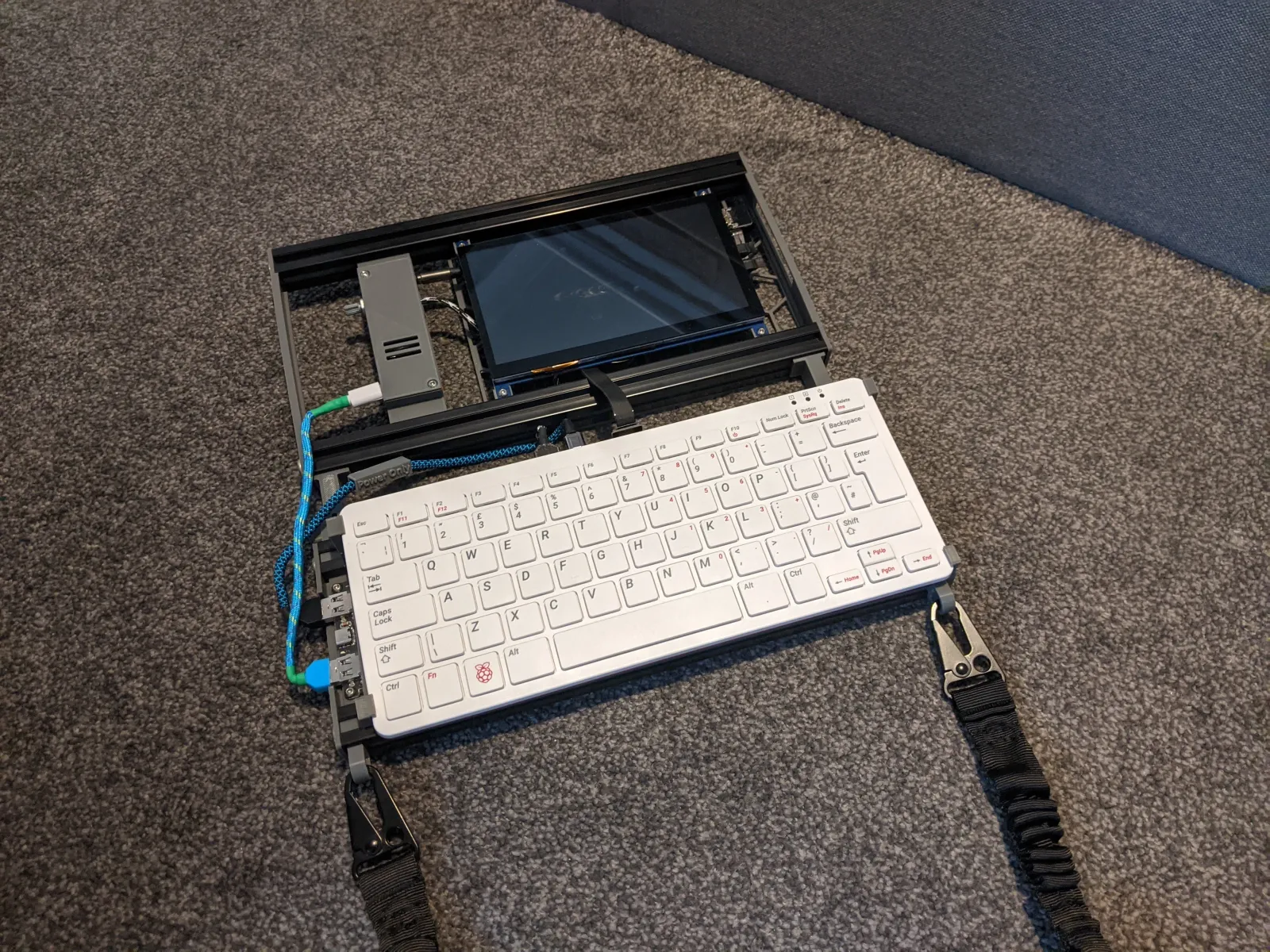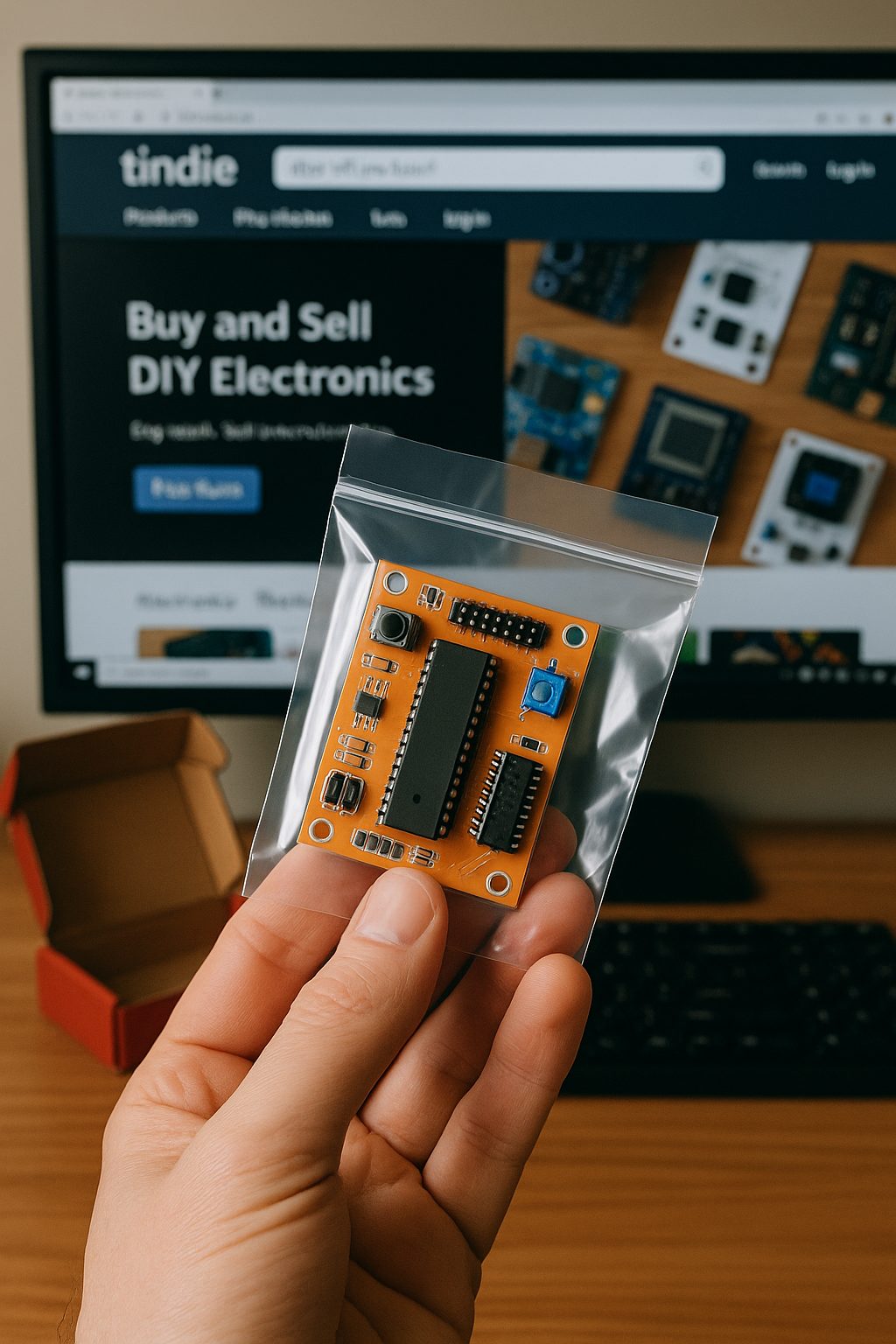In a converted warehouse space in Philadelphia, Jay Doscher slides open a military-grade Pelican case to reveal what might be the most punk-rock computer you’ve never heard of. Inside, nestled in custom-cut foam, lies a Raspberry Pi minicomputer connected to a seven-inch touchscreen, a mechanical keyboard with Cherry MX switches, and an array of networking ports that would make a Pentagon hacker weep with joy. This is Doscher’s “Recovery Kit” a ruggedized, portable computer that looks like it was pulled from the pages of William Gibson’s Neuromancer and built to survive the apocalypse.
Welcome to the cyberdeck movement, where science fiction becomes reality one hand-built computer at a time. Since 2020, thousands of makers, hackers, and digital rebels have been crafting personalized portable computers that reject the sleek uniformity of consumer electronics in favor of functional, customizable machines that embody cyberpunk’s core philosophy: technology should be personal, hackable, and undeniably cool. This isn’t just another maker hobby, it’s a cultural response to our increasingly locked-down digital world, where creativity meets resistance in the form of jury-rigged computers that their creators call “cyberdecks.”
The movement has evolved from a handful of experimental builds to a thriving community with annual contests, commercial kit makers, and philosophical debates about what computing should be. What began as literal interpretations of cyberpunk fiction has become something more significant: a grassroots effort to reclaim personal computing from corporate control, one custom keyboard at a time.
From typewriter to cyberpunk reality
The story begins in 1982, when William Gibson sat at his manual typewriter—having little experience with actual computers—and imagined portable devices that “console cowboys” would use to jack into cyberspace. His cyber decks were roughly the size of paperback books, customizable pieces of “street tech” cobbled together from military surplus and black market components. Gibson’s vision in Neuromancer was intentionally sparse on technical details, leaving room for readers’ imagination to fill in the blanks.
Four decades later, that imagination has become reality. The fictional Ono-Sendai Cyberspace 7 that Case used to navigate Gibson’s matrix has inspired hundreds of real-world builds that capture the aesthetic and philosophy of cyberpunk while delivering actual computing power. The transition from fiction to physical reality accelerated dramatically during the COVID-19 pandemic, when lockdowns gave makers time to build while supply chain disruptions encouraged the “post-apocalyptic cobbledeck” aesthetic of working with whatever components were available.
“We were living through this weird apocalyptic moment where getting basic electronics was genuinely challenging,” explains bootdsc, creator of the VirtuScope cyberdeck and founder of the Cyberdeck Cafe, the movement’s unofficial headquarters. “That forced scarcity actually made the builds more authentic to Gibson’s vision; you work with what you can get.”
The community crystallized around shared platforms like the Cyberdeck Cafe’s Discord server, which now hosts over 1,300 members sharing builds, troubleshooting problems, and debating the finer points of power management circuits. Unlike many tech communities, this one explicitly welcomes newcomers: “We are an all inclusive group, everyone is welcome there’s no gatekeeping at the Cafe,” reads their mission statement. “We were all noobs in the beginning.”
The art of functional rebellion
What exactly is a cyberdeck? The community resists rigid definitions, embracing a philosophy that “it’s whatever you want.” However, most builds share common DNA: single-board computers (usually Raspberry Pi systems) connected to custom displays, mechanical keyboards, and enough batteries to operate independently of wall power. The aesthetic ranges from military-inspired rugged cases to sleek 3D-printed enclosures that wouldn’t look out of place in a Ridley Scott film.
Jay Doscher, whose Recovery Kit builds have become community legends, embodies the movement’s practical philosophy. “Although I read (and loved) William Gibson’s Neuromancer, I set out for these projects to be durable, portable, and hackable Raspberry Pi designs,” he says. His Pelican-case builds started what the community calls the “Pelican case craze”—ruggedized computers built inside waterproof cases that can survive being dropped, dunked, or shipped to Antarctica.
The technical specifications reveal devices that prioritize personality over performance. A typical mid-range build centers around a Raspberry Pi 4 with 4GB of RAM ($80), a 7-inch touchscreen ($75), a compact mechanical keyboard ($80), and an 18650 battery system ($45), all housed in either a 3D-printed chassis or military surplus case ($10-90). Total cost ranges from under $100 for basic builds to over $1,200 for premium systems incorporating Intel processors and specialized equipment.
But raw computing power isn’t the point. As Hackaday noted in their coverage of the annual cyberdeck contests, “There seemed to be consensus that it was difficult to compete with a standard laptop in terms of general purpose computing, but that a cyberdeck tailored to a specific use case could be a powerful tool.” These machines excel at specialized tasks: penetration testing, radio frequency monitoring, off-grid networking, or serving as portable workstations for fieldwork where laptops fear to tread.
The builders and their motivations
The cyberdeck community attracts an eclectic mix of people united by shared frustrations with mainstream computing. Many builders describe feeling alienated by the trend toward ever-thinner laptops that sacrifice ports, repairability, and customization for aesthetic minimalism. “Computers were supposed to be personal, customizable, and cool,” reflects one community analysis. “At times, in this cold modern world, we forget that.”
Io Tenino, creator of the Joopyter retro personal terminal complete with integrated printer, represents the artistic side of the movement. “A big part of the appeal is artistic,” they explain, “as the design and construction of their personal deck allowed them to show off their creativity.” Their build combines 1980s terminal aesthetics with modern computing power, creating a device that functions as both art object and practical tool.
The community spans demographics and skill levels, from software engineers seeking creative outlets to complete beginners drawn by the welcoming culture and extensive documentation. Nicholas LaBonte creates elegant handheld cyberdecks that blend cyberpunk and nautical aesthetics, while builder a8ksh4 focuses on ultra-portable designs like the Chonky Palmtop. MS3FX developed a “Retrocart” system that houses cyberdecks in vintage video game cartridges, turning computing into collectible art.
What unites these diverse creators is a shared philosophy of technological self-determination. Building a cyberdeck represents rejection of the “black box” consumer electronics model in favor of transparent, modifiable systems. As one community member puts it: “Building a cyberdeck from scratch gives users the freedom to include any type of component they choose, giving them greater control over every piece of equipment.”
Recognition and evolution
The movement gained broader recognition through Hackaday’s annual cyberdeck contests, which began in 2022 and have become major community events. The first contest received over 100 entries, far exceeding organizers’ expectations and establishing cyberdecks as a legitimate maker category. Winners like the movie-prop-quality Hosaka MK I “Sprawl Edition” and the laboratory-equipped Cyberdeck Red demonstrated the community’s evolution from “plywood decks held together with hot glue” to sophisticated custom computers that rival Hollywood productions.
The 2023 contest showcased the movement’s maturation, with categories like “Icebreaker” for practical applications and “Turing Police” for AI integration. Contest judge commentary noted that the community had “moved well past the ‘how’ stage, and is now deep into the ‘why’”—shifting from technical proof-of-concept to purposeful design philosophy.
This evolution reflects broader changes in maker culture and computing. The cyberdeck movement intersects with multiple communities: ham radio operators integrating software-defined radios, security researchers building portable penetration testing platforms, and cosplayers creating functional props. The crossover extends to retro computing enthusiasts who repurpose vintage computer cases and gaming communities inspired by devices like the Steam Deck.
Challenges and controversies
Like any vibrant community, the cyberdeck world has its tensions and debates. A persistent criticism holds that “functionality too often takes a backseat to aesthetics”—that builds prioritize looking cool over being useful daily drivers. The community actively grapples with this balance, with some builders focusing on pure aesthetic achievement while others emphasize practical applications.
The Raspberry Pi shortage crisis of 2021-2023 severely impacted the community, with semiconductor shortages driving prices from $35 to over $100 and creating months-long waits for basic components. The Pi Foundation’s decision to prioritize commercial customers over hobbyists created community backlash and forced builders to explore alternative platforms or work with salvaged components—ironically making builds more authentic to cyberpunk’s scrappy aesthetic.
Community fragmentation has also emerged, with tensions between different platforms and approaches. The welcoming Cyberdeck Cafe explicitly distances itself from Reddit’s r/cyberdeck, noting “if you’ve ever visited you already know it’s not a real friendly place.” This gatekeeping represents the kind of exclusionary behavior the broader community works to avoid.
The future of personal computing
The cyberdeck movement represents more than nostalgic tech hobbyism—it embodies a vision of computing that prioritizes user agency over corporate convenience. In an era of sealed devices, subscription software, and algorithmic recommendation systems, cyberdecks offer radical alternatives: computers that users understand, modify, and control completely.
Recent builds demonstrate increasing sophistication and practical application. Emergency responders have adopted ruggedized builds for field communication. Researchers use specialized configurations for scientific data collection. Security professionals carry custom penetration testing platforms that outperform commercial alternatives while costing a fraction of the price.
The movement’s philosophy resonates beyond its immediate community, connecting to broader concerns about technological autonomy, right-to-repair advocacy, and resistance to surveillance capitalism. As mainstream technology becomes increasingly abstract and controlled, cyberdecks offer tangible proof that alternatives remain possible.
Building the future, one deck at a time
At DEF CON 31, surrounded by black-hat hackers and corporate security executives, a small cyberdeck meetup drew enthusiasts sharing their latest builds. The devices ranged from sleek clamshell designs to ruggedized military surplus cases, each reflecting its creator’s personality and priorities. What struck observers wasn’t the technical specifications—though some were impressive but the obvious pride and connection each builder felt toward their device.
“I hope that somebody like me, who has no training or education in computers, electronics, etc., sees this and gives building a try,” reflects one community member. That sentiment captures the movement’s deeper significance: in a world of increasingly uniform technology, cyberdecks represent the radical act of building something uniquely your own.
The cyberdeck community proves that the future doesn’t have to be dictated by corporate design committees or focus groups. Sometimes it emerges from maker spaces and Discord servers, built by people who read too much science fiction and decided to make it real. In an age of digital conformity, that kind of creative rebellion feels genuinely revolutionary.
As bootdsc notes while documenting another community build, “It’s not about the destination—it’s about the journey of building something that’s completely yours.” In the world of cyberdecks, that journey leads not just to a functional computer, but to a different vision of what technology could be: personal, customizable, and undeniably cool.










Leave a Reply